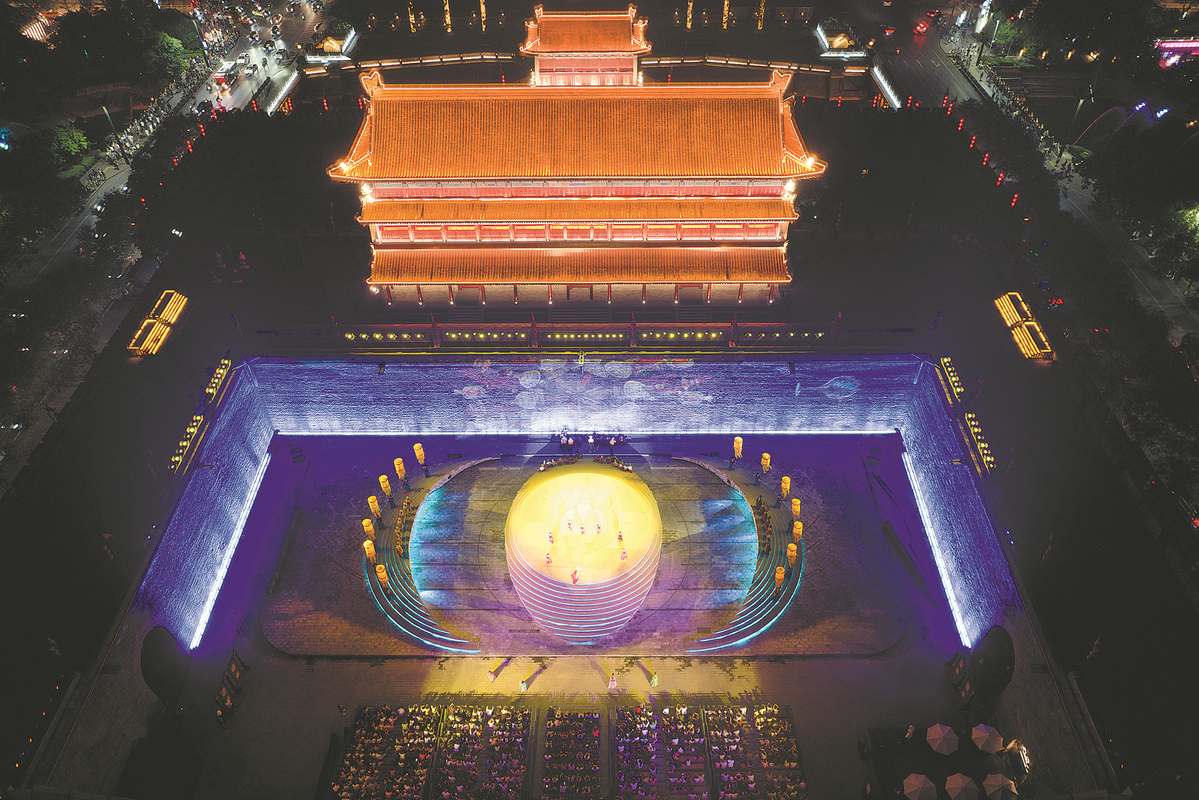Technology empowers ancient city wall preservation, tourism innovation


XI'AN — Over the past few years, technology has played an increasingly important role in cultural heritage protection and the innovation of cultural tourism products in China. One of the beneficiaries of this trend is the Xi'an City Wall, China's largest and best-preserved ancient city wall.
Located at the heart of Xi'an, capital of Shaanxi province, the city wall was built as a military defense system over 600 years ago on the foundation of a prior structure dating back to the Sui and Tang dynasties (581-907). The wall is up to 14 meters wide at the top and consists of a series of military facilities, including watchtowers and crenels.
Bearing witness to history, the city wall also integrates seamlessly with modern urban life. Numerous tourists stroll on top of it or in the surrounding scenic area, while streams of vehicles pass through the city gates daily.
However, the city wall has experienced uneven settlement over the years, developing cracks and outward bulging in some parts. This produced the challenge of effectively preserving the ancient treasure without disrupting its modern functions. Conservation experts have responded to this challenge by seeking solutions using advanced technologies.
According to Su Ning, assistant director of the Xi'an City Wall management committee, over 3,000 monitoring spots have been set up along the wall complex, which runs for 13.74 kilometers. Nearly 2,400 of these monitoring spots keep track of wall settlement and more than 400 track horizontal displacements.
Meanwhile, cameras have been installed at the city wall scenic area to detect real-time changes in visitor flow, water levels in the moat, and for security.
All data converge at the information center of the management committee and are displayed on large screens, said Su. Based on the data and the pattern of damage, the committee has set warning thresholds, while using different colors to represent different alert levels and implementing corresponding measures.
"Additionally, we have determined the city wall's static and dynamic load capacities, which are used to coordinate visitor flow to minimize the impact of tourism activities on the wall," said Su.
Last year, muon imaging technology was used in a "physical examination" of the wall, marking the first application of this technology in relic conservation efforts in China.
Conducted by a research team from the School of Nuclear Science and Technology at Lanzhou University, muon imaging allows for high-precision scanning of the inside of the thick body of the wall to discover damage, without any harm to the wall itself — in contrast with traditional methods.
Empowered by such technologies, conservation of the city wall has shifted from reactive repairs to proactive damage monitoring and prevention, Su noted.
Meanwhile, new ways of exploring the wall have emerged for visitors, with the rapid evolution of digital technologies giving birth to a diverse array of tourism products.
Upon entering the Xi'an City Wall scenic area, visitors can follow the guidance of a tour app that tells them the history of the city wall and shares stories concerning various attractions, while also highlighting popular spots for taking photos.
Once visitors reach the area above the city wall's south gate, a 3-square-meter digital sand table vividly portrays the intricate layout of the city of Chang'an at the time when Xi'an was the capital of the Tang Dynasty (618-907), using state-of-the-art digital projection and visual effects to revive its glory days.
For those who cannot personally get there, a digital museum can offer an immersive tour of an archaeological research museum inside the Xi'an City Wall. The museum houses the remains of the oldest part of the Xi'an City Wall — a city gate built about 1,400 years ago, among other relics.
"Novel digital products can better evoke the public's fondness for history and culture," said Zhao Bin, director of the Xi'an City Wall Digital Industry Innovation Center, adding that the city wall scenic area received over 8.5 million visits in 2023.
In recent years, China has advocated a national cultural digitization strategy to invigorate the cultural sector and cultural industries. The implementation of this strategy was noted in this year's government work report delivered to the second session of the 14th National People's Congress.
The Xi'an City Wall will develop in line with the national cultural digitization strategy, strengthening collaboration with universities and enterprises to cement cultural relic preservation and cultural tourism, said Zhao.
Xinhua
- China launches first national standard on school meal services
- China's nano 'two-photon factory' sets world record
- Low-altitude transit route links Shanghai, Jiangsu
- Shanghai-Hong Kong Youth Choir Festival launches
- Chinese courts step up efforts to safeguard stability
- Former tech group executive sentenced for bribery





































